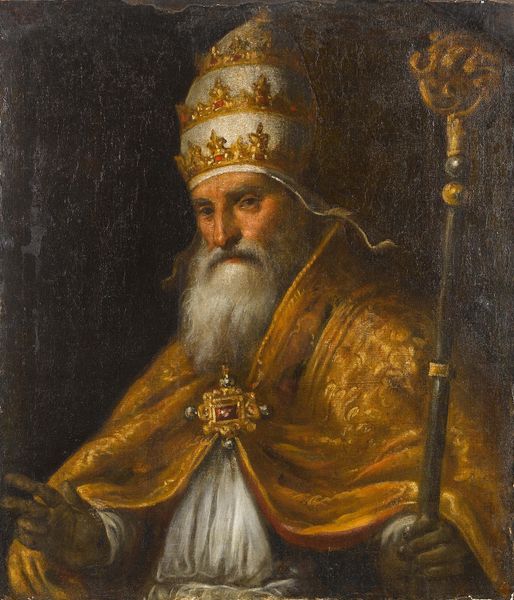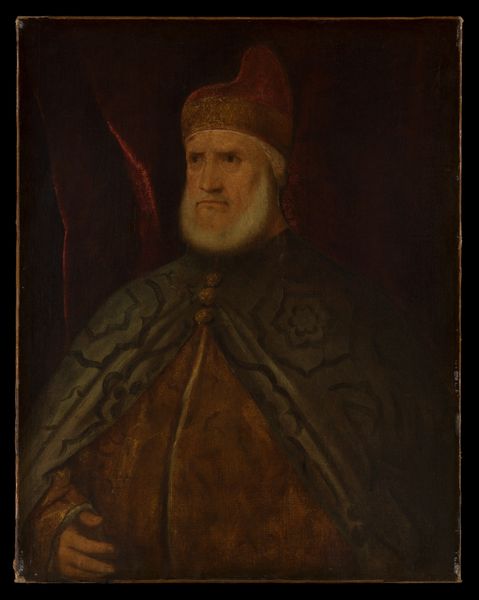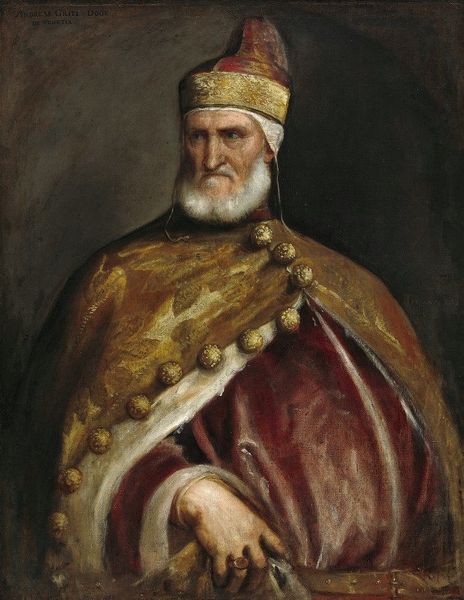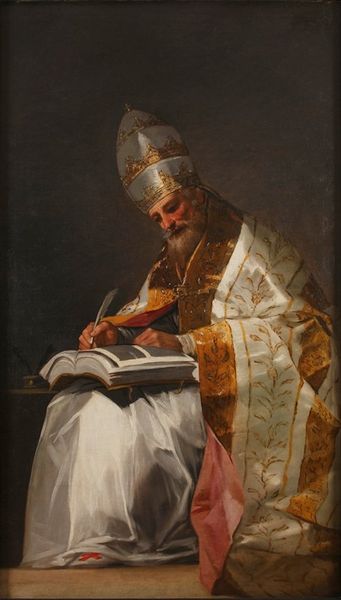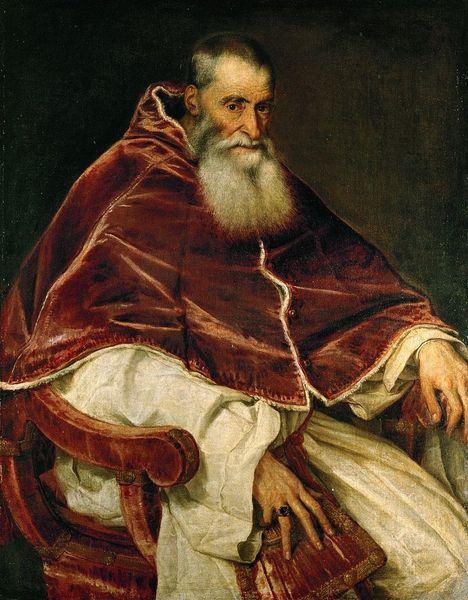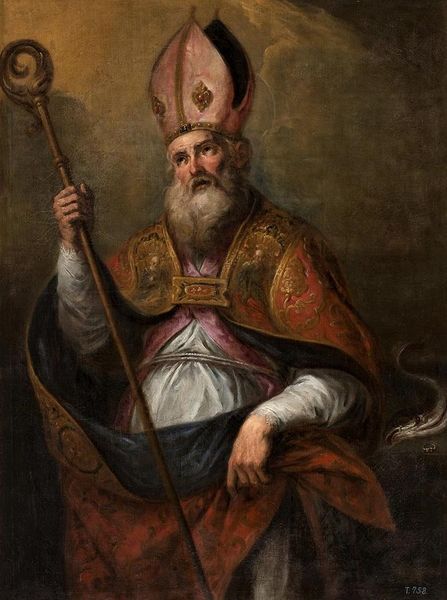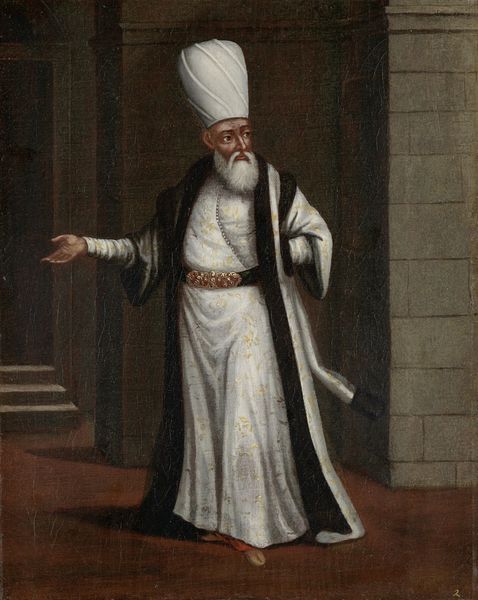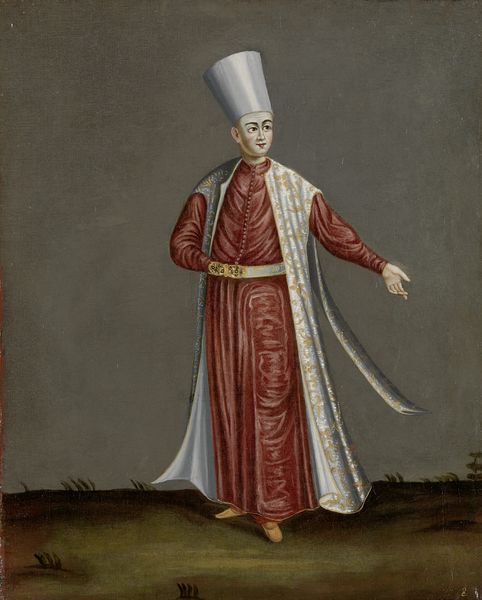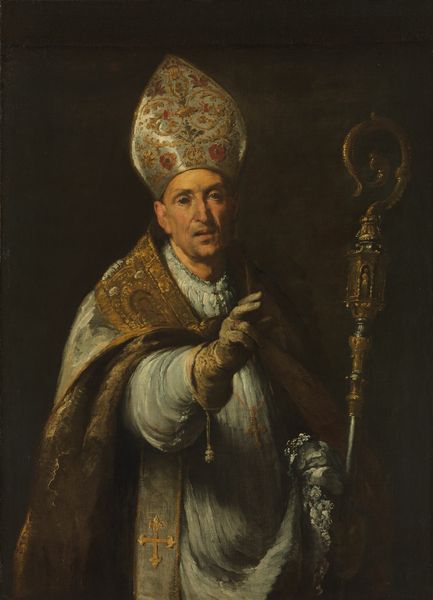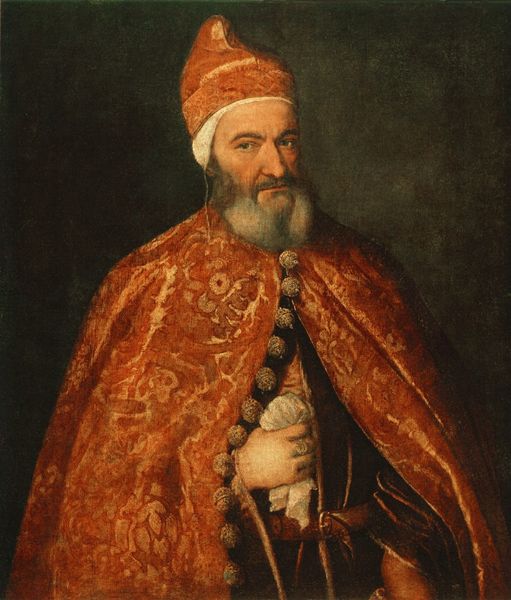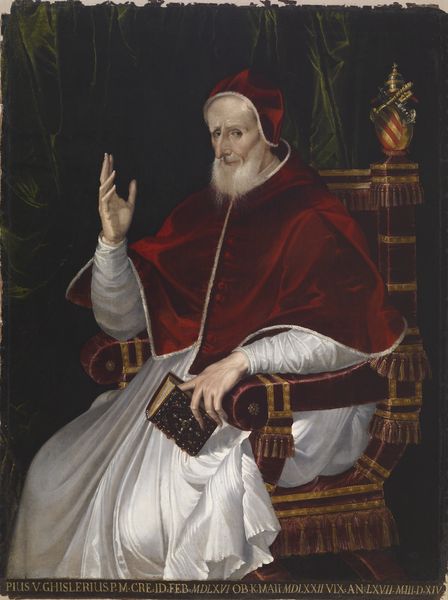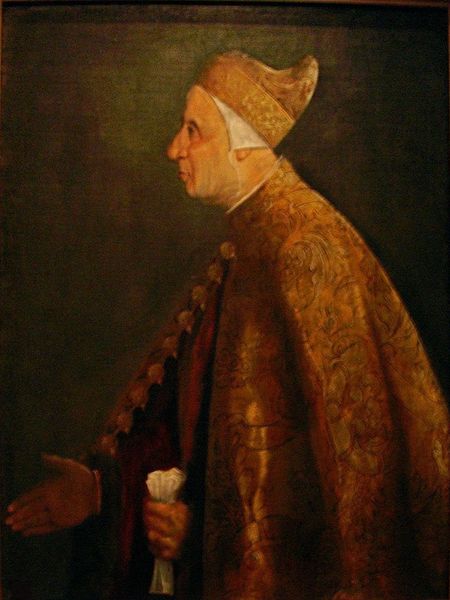
Portrait of the Doge Marcantonio Memmo (1537-1615, Doge since 1612) after 1612
0:00
0:00
oil-paint, oil
#
portrait
#
baroque
#
oil-paint
#
oil
#
oil painting
#
14_17th-century
#
history-painting
#
italian-renaissance
Dimensions: 111.1 x 99.6 cm
Copyright: Public Domain
Curator: Standing before us, we have an oil on canvas identified as a portrait of Doge Marcantonio Memmo by Leandro Bassano, likely completed after 1612. Editor: My immediate response is one of stillness. He is formidable and the texture is mesmerizing. Curator: It’s interesting that you highlight the stillness, given the historical context. Memmo's short reign as Doge of Venice was marked by considerable political turmoil, with factions vying for power and social tensions simmering beneath the surface of Venetian society. How does that history, those tensions, inform your experience of the painting? Editor: I see it in his eyes. He wears the clothes of power but seems wearied by its burden. In his stoic visage, can we see the pressures of leadership and the intersection of power with identity? What was Venetian identity at this time? How did it reinforce existing social power structures and further oppress marginalized communities? Curator: Well, portraits like this absolutely helped construct and reinforce the image of Venetian power and stability. They played a crucial role in shaping the public image of the Doge. Bassano had to be careful; too much reality, too much visible stress and you undermine that projection of authority. This portrait hangs here, in the Städel Museum, which gives it yet another layer of meaning now as an object of display. How do institutions impact how the image continues to be viewed? Editor: Precisely. Looking at the context of display is a must. How do museums grapple with artworks like these? Does their prominence amplify past injustices, or can they serve as a tool to understand its legacy? What curatorial choices are available to acknowledge this artwork's history, its position within cultural discourse, and the responsibilities associated with its visibility? Curator: Absolutely, considering those factors adds complexity and depth to how we view the painting. It acknowledges not just the sitter but the entire system of power and representation that brought the work to be and keeps it on display today. Editor: Thinking about power and identity enriches our view of art. What do you think it highlights about Bassano's role within Venice? Curator: Bassano found himself balancing artistic talent and political expectations; this piece shows this. Thank you for that crucial observation, and to the audience for exploring this complex work with us!
Comments
No comments
Be the first to comment and join the conversation on the ultimate creative platform.
